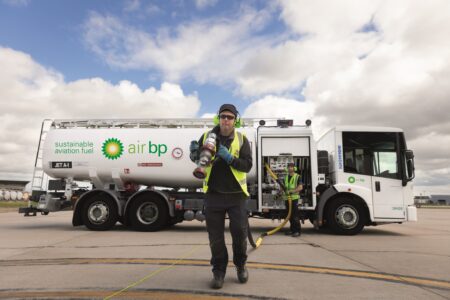Words by Stephen Myers, executive vice president at Elite Jets
Sustainable travel is rising in popularity as eco-friendly individuals, couples and families take a new approach to vacation planning.
Many green travelers are not booking trips to big cities, theme parks and all-inclusive resorts. Instead, they are eyeing eco-friendly destinations to snorkel, scuba dive, paddleboard, hike, mountain climb, ride horses and spot wildlife in their natural habitat.
Green travelers also are being more selective about where they spend their money. Hotels, restaurants, retail stores and rental car companies that promote eco-friendly policies and procedures can attract green travelers. Some companies no longer view green practices as an expense; it is a path toward profitability.
Celebrities, corporate executives and politicians often face criticism for their use of private jets. However, today’s private jets are much more fuel efficient and emits less pollution than the jets of a generation ago.
Every individual and every industry should strive to minimize their impact on the environment. Below are frequently asked questions about how private aviation can support eco-friendly travel.
What is an eco-friendly jet?
Jets with the best fuel economy are often considered green aircraft, and that starts with the design process. Aeronautical engineers continue to study aerodynamics, coatings and materials. Lighter aircraft that cut through the air will burn less fuel, which is better for the environment. Manufacturers continue studying renewable fuel sources in lieu of jet fuel. These same manufacturers are stepping up to incorporate more recycled metals, plastics and fabrics into cabin spaces. Quieter jets also can be considered green because they emit less noise pollution.
Which is greener – a private jet or commercial airplane?
Jets are like other vehicles. Some cars inevitably get better fuel economy or emit less pollutants than other models. However, all vehicles – from compact cars to seven-passenger SUVs – must comply with federal regulations. The same holds true for jets. In general, newer aircraft tend to be more eco-friendly than aircraft built 20 or more years ago.
Sustainable Aviation Fuel (SAF) is a biofuel still in its infancy for jet engines and could dramatically reduce greenhouse gas emissions. Aviation Gasoline (AVGAS) is a common fuel for piston-engine aircraft, and the FAA is actively working to reduce lead levels to improve emissions.
What other ways can flying privately be considered green?
The travel experience extends beyond the period from wheels up to wheels down. Private charter companies, as well as aircraft manufacturers, can implement environmentally friendly practices into their daily operation. Installing solar panels on hangar roofs to generate electricity, using recycled materials for catering boxes and purchasing organic, locally grown food all contribute in small ways to being more eco-friendly.
For example, Elite Jets curated a fleet of eco-friendly aircraft with the purchase of an Embraer Legacy 500 and four Embraer Phenom 300s. Embraer integrated newer, more efficient technologies into the design process, creating clean sheet designs that are lighter and more aerodynamic. Thus, the jets are among the most fuel-efficient aircraft with the smallest carbon footprint in their class.
There are many types of green practices any eco-friendly business can implement including implementing a Sustainable Aviation Fuel program, installing charging stations for passengers with electric vehicles and adding LED lighting throughout hangars and offices.
At Elite Jets, being green is not just a company mantra. It is a mission and lifestyle embraced by company leadership and pilots as well as client services, safety, maintenance and custodial teams.





